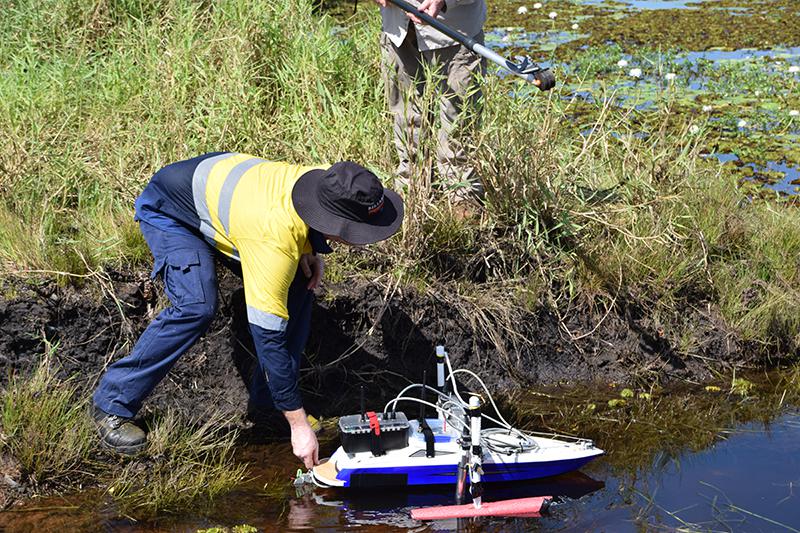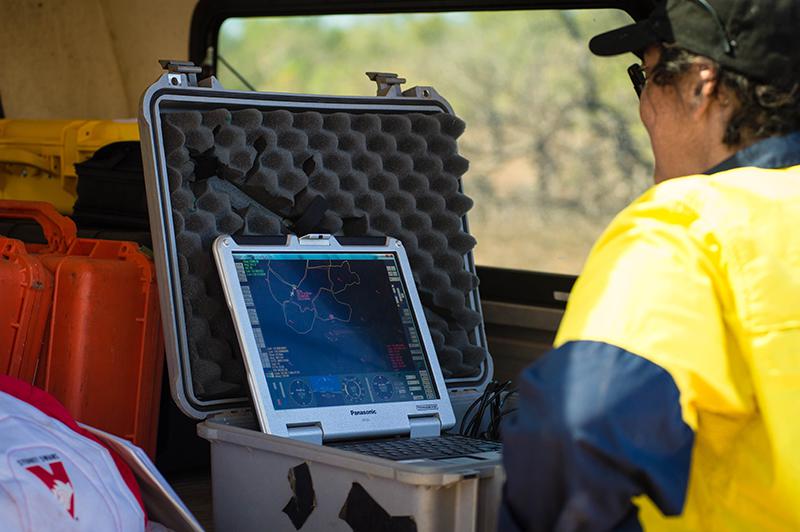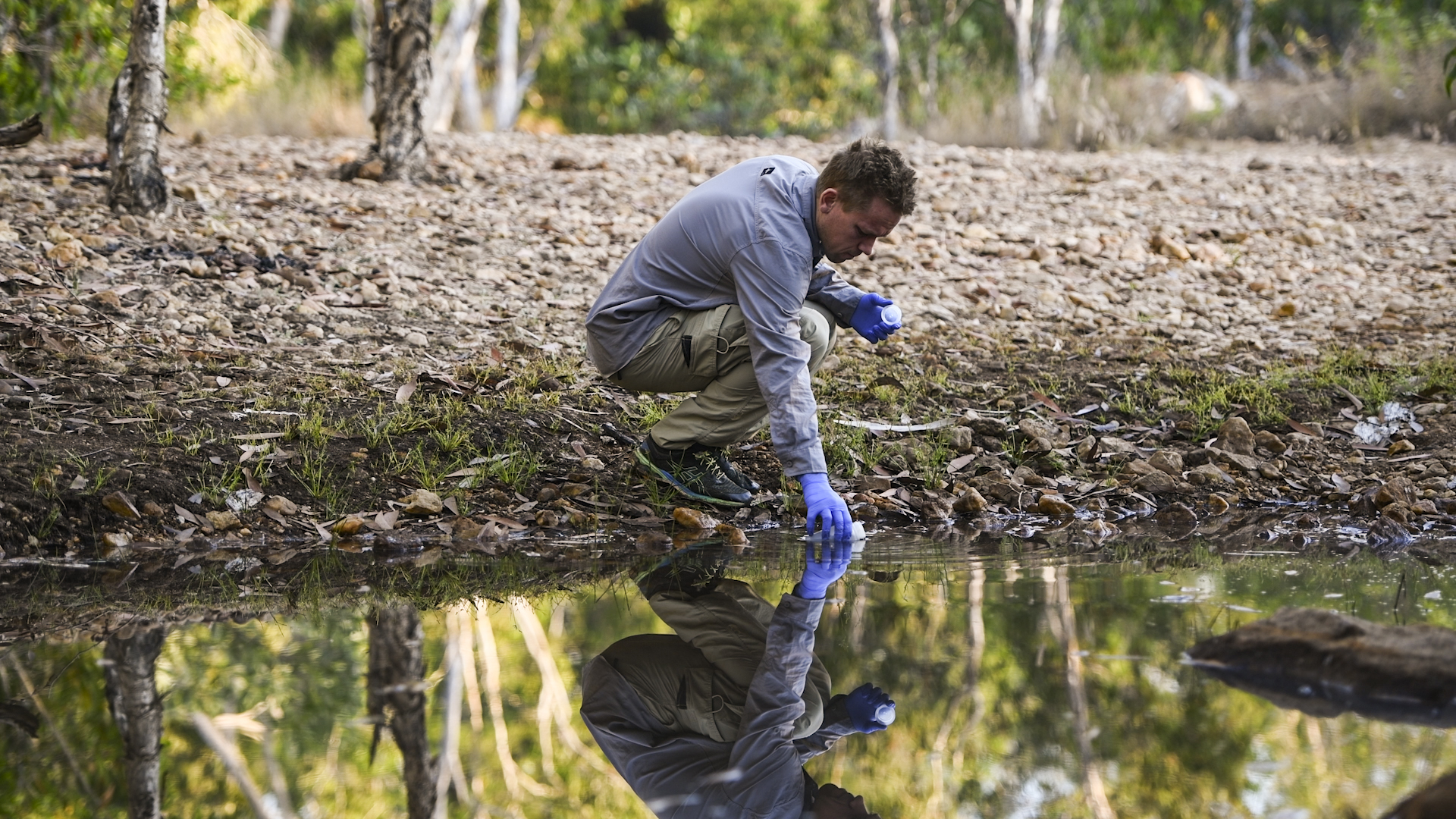Despite being unsatisfied or unsure about how well current environmental monitoring meets monitoring objectives, most people undertaking environmental monitoring in northern Australia are positive about new techniques improving their monitoring outcomes.
Based directly on user and expert input, this project identified priority emerging environmental monitoring technologies and techniques, as well as the research needed to refine them for widespread use. Project participants paid particular attention to overcoming challenges of undertaking environmental monitoring in northern Australia such as wet season inaccessibility, safety hazards (e.g. crocodiles) and of course the remoteness and sheer size of the region.

Miniature boat monitors aspects of water quality. Photo by ERISS, Department of Climate Change, Energy, the Environment and Water.
The project reviewed a range of emerging monitoring techniques and technologies and identified those with a high relevance: research-effort ratio, meaning they are very relevant for use in northern Australia despite, in some cases, needing significant research before widespread use. These priorities include satellite remote sensing, drones and genetic techniques.
The project has provided useful information for government agencies, environmental consultants and researchers alike. For example, Queensland Government scientists have used the monitoring reviews to inform their work in statewide river health monitoring and in the Hub’s project on the Mitchell River catchment (e.g. more informed satellite imaging techniques and more informed otolith work). For Northern Territory scientists, the project has stimulated thinking and better defined important gaps in for example storing large data sets, integrating data and in sonar technology needs.

Remotely operating a fixed wing drone. Photo by ERISS, the Department of Climate Change, Energy, the Environment and Water.
The project’s prioritisation work has also informed the identification and scoping of two NESP NAER Hub projects focusing on environmental DNA (eDNA). The use of eDNA for species detection is leading-edge technology that has the capacity to generate practical outcomes for immediate application.
eDNA is DNA released by an animal into its aquatic environment via hair, skin, eggs etc. This DNA only lasts a short time before it is broken down so if water, sediment or soil samples taken from waterways contain this DNA, the species recently present in the area can be identified. In other words, surveying an aquatic field site may be as easy as collecting a water sample!
The technique has enormous advantages over traditional monitoring including greater time and cost-efficiency, improved safety, increased accuracy and targeted detection e.g. of a rare species or new pest species. The information generated from eDNA surveys can be used to inform planning processes, impact assessments, development decisions and compliance monitoring, meaning its potential to facilitate improved environmental outcomes is enormous.

Collecting samples from water bodies can be tested for eDNA to help with remote monitoring. Photo by NESP Northern Hub.
The developing e-DNA methods for tropical waters project is working at different field sites across the north to develop and test eDNA probes for key aquatic species, improve sampling and transport methods and answer management questions. The developing eDNA methods to detect Top End animals project is developing a test for the threatened Gouldian finch as a proof of concept, which is now being trialled in aviary studies. Following this, researchers will test waterhole samples and compare test performance against existing survey methods under the NT Government’s $10M “Mapping the Future” program, allowing both validation and an assessment of cost-effectiveness and potential complementarity.
Research outputs
Attributions